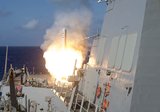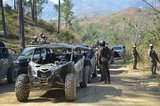US lawmakers warn that “more military spending is absolutely necessary” to ensure Pentagon’s readiness
The US Congress has raised concerns about how inflation rates and cuts in main acquisition programmes could affect the US military.
SkyWest, Inc. has reported its preliminary financial figures for the year ending 31 December 2009.
Operating revenues for the year were $2.61 billion, compared to $3.50 billion for the year ended 31 December 2008. SkyWest reported net income of $83.7 million or $1.47 per diluted share, for the year ended 31 December 2009, compared with $112.9 million of net income, or $1.93 per diluted share for the previous year.
At 31 December 2009, SkyWest had approximately $732.4 million in cash and marketable securities, compared to $705.2 million as of 31 December 2008. SkyWest's long-term debt was $1.82 billion as of 31 December 2009, compared to $1.68 billion at 31 December 2008. The increase in SkyWest's long-term debt was primarily the result of acquiring 14 new Bombardier CRJ700s and one CRJ900 that were financed with long-term debt, partially offset by SkyWest's payment of normal recurring debt obligations. SkyWest has significant long-term lease obligations that are recorded as operating leases and are not reflected as liabilities on SkyWest's consolidated balance sheets. At a 5.8% discount rate, the present value of these lease obligations was approximately $2.1 billion as of 31 December 2009.
At the end of 2009, SkyWest's fleet totalled 449 aircraft, consisting of 398 regional jets (246 assigned to Delta Air Lines, 147 assigned to United, two assigned to AirTran and three assigned to SkyWest), 51 Embraer EMB-120 Brasilias (40 assigned to United and 11 assigned to Delta).

The US Congress has raised concerns about how inflation rates and cuts in main acquisition programmes could affect the US military.

Washington’s ageing inventory and the pace Moscow and Beijing have been modernising their capabilities put in check the US Nuclear deterrence.

The Pentagon has been operating under temporary funding since October 2023, which has impacted its main acquisition and development programmes, increasing the capability gap between the US and China.

In 2023, defence spending increased by an unprecedented 11% across European NATO countries and Canada. Since 2014, the group has spent an additional US$600 billion on defence.

The DoD requested nearly US$850 billion to fund operations over the next fiscal year. Despite the amount being 1% higher than the FY2024 budget request, it has not covered the 3% inflation rate, which could impact the DoD’s main programmes in the medium and long term.

As gangs gain control of Port-au-Prince, Haiti’s Caribbean neighbours have been preparing to intervene in the failed state, with the US and other partners waiting in the wings with equipment and financial support.